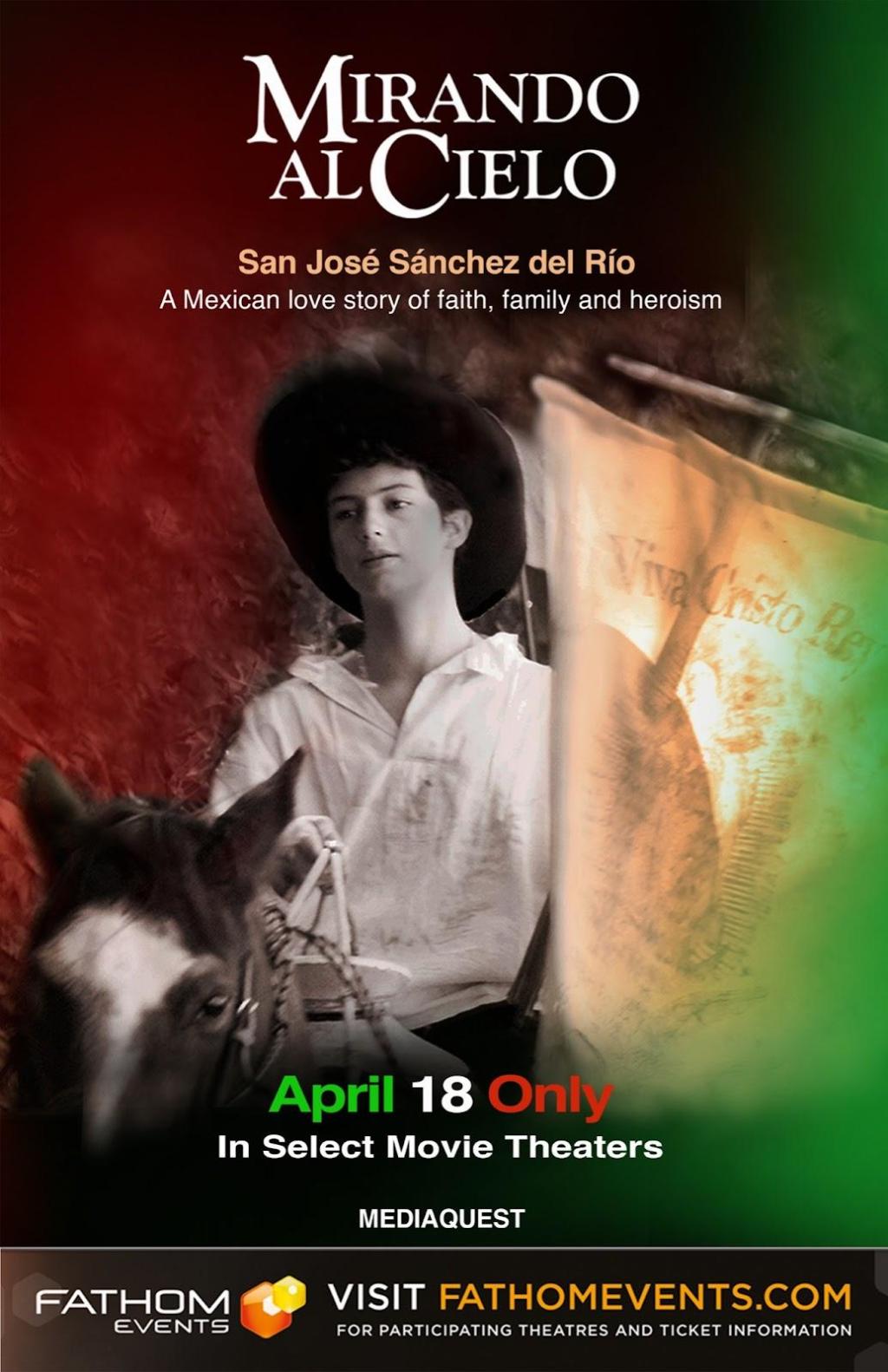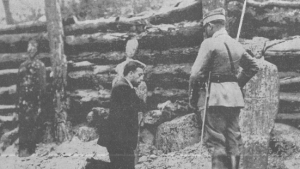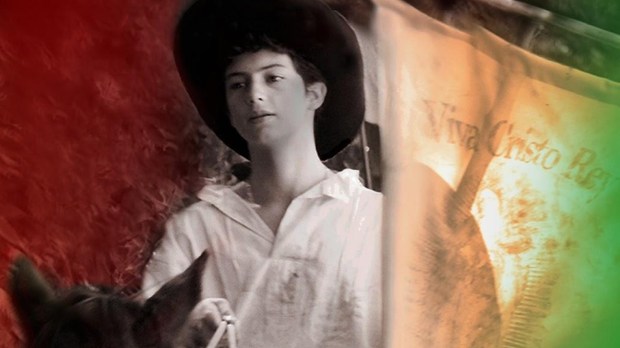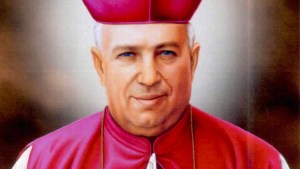Mention the year 1929, and most Americans will think of Black Tuesday, the fateful day in October of that year when the stock market crashed, kicking off the Great Depression.
Few will call to mind the Cristero War also going on that year, just south of the border, when as many as 100,000 Mexicans lost their lives defending the Church against an anti-Catholic and anti-human government.
Many of the martyrs from that war have since been canonized, and yet their history is unknown, shockingly even in Mexico, where this dark chapter has not so much been forgotten as repressed.
“Our movie tells one of the many beautiful stories that exist in México,” said Antonio Peláez, writer, producer, and director of Mirando al Cielo (Looking at Heaven).
The movie, from Fathom Events, will have a one-day-only showing in theaters on April 18.

A boy, a hero
Looking at Heaven tells the story not just of a martyr, but of a child martyr, José Sanchez del Rio (powerfully played by Julian Fidalgo), who as a young teen asks his parents their blessing to join the ordinary Catholics who have taken up arms (the Cristeros) and fight for the rights of the Church.
At just 14, he suffers an unbelievably cruel martyrdom even as he cries “Viva Cristo Rey,” long live Christ the King.
“Joselito’s story plays out during the religious persecution in México in the years 1926 to 1929, and believe it or not, there are many people to this day who don’t know about this crucial period of history or Saint José’s remarkable and valiant story. This true story of heroic faith, forgiveness, and sacrificial love will touch hearts and lives,” assures Peláez, who produced the film along with his wife Laura.
José Sánchez del Río was declared a saint of the Catholic Church and canonized on October 16, 2016, by Pope Francis. He is a patron saint of persecuted Christians, children, and adolescents.
“There are stories that are seen, heard and gone, but Looking at Heaven will stay in the hearts of people for a long time. It will be a movie that will give a lot to talk about, and will be very difficult to forget,” the director suggests.
Thanks to the intercession of José a little girl from his hometown was healed, in a miracle recognized by the Vatican.
Ximena Guadalupe Magallan Gálvez, known by family and friends as Lupis, fought tremendous odds to live, and at one point, doctors told her family that 90% of her brain was dead. Today, she’s healthy and full of life. Read her amazing story here.
An ancient story, a modern story
A movie that tells the story of modern Catholic persecution could hardly be more timely. From 2020 to 2022, a review of core countries of concern found an increase in persecution in 75% of them.
And yet, as it happened in 1920s Mexico, and as it has happened around the world since the days of Diocletian or Nero, the “blood of martyrs is the seed of the Church.” Consider, for example, in Nigeria today, 94% of self-identified Catholics say they attend weekly or daily Mass. And yet, 89% of Christians killed throughout the world are located in Nigeria.
Looking at Heaven is a story less than 100 years old, and yet it is the same story that has been told for 2,000 years, and is told over and over today, in our own times.
It is a movie about grace, faith, hope and courage — the courage of a boy, and of a mother. The courage of the People of God.
Looking at Heaven is part of Fathom Events’ ongoing series on the saints. It features added value content from leaders in the United States who share more about the themes in the film and the importance of San José Sánchez del Río’s story for today. Among those who share is Rafael Sánchez, nephew of the saint.
Various Catholic leaders have prepared a 14-video devotional series to complement the movie, which we featured here.
Visit Fathom Events page to find your theater and purchase tickets here.
Cristero War
The Cristero War happened during the tenure of Presidente Plutarco Elias Calles. Officially in office from 1924-1928, he effectively retained much influence until 1940. He was around long enough to begin and oversee the period in which the Cristero War took place, one of the darkest and bloodiest periods in Mexican history.
Presidente Calles was a populist but within two years of his presidency he turned viciously on the Catholic Church. Using the anti-clerical articles of the Constitution of 1917, he attempted to literally wipe out Catholicism in Mexico. The Cristero War left a long list of dead priests, nuns, brothers and lay Catholics from all over Mexico.
Perhaps the most well known is Blessed Miguel Pro, but in addition to him, the Church has recognized other martyrs from the Cristero period. In the year 2000, Pope St. John Paul II canonized a group of 25 martyrs from the period, including 22 priests and three lay persons.
An additional 13 victims, mostly lay persons, were declared martyrs in 2005, under Pope Benedict XVI.
In 2016, the last living Cristero died at age 103.



